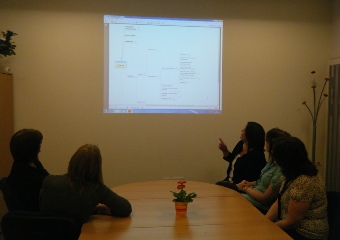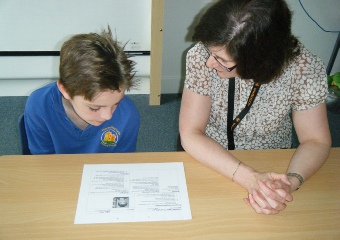Any queries about the ABLe approach, contact us at dundee.eps@dundeecity.gov.uk
General Guidance
Introduction
The ABLe approach has been created within Dundee Educational Psychology Service, led by the Educational Psychology Service. ABLe aims to provide support and guidance for teachers and early years practitioners to develop inclusive practice. It is a comprehensive structure for assessment and intervention, which staff can use to investigate both barriers to learning and strategies for adapting the learning environment. This approach applies to all learners.
The ABLe model brings together both the information we need to gain a better understanding of what is getting in the way of a child’s learning and, access to a comprehensive range of advice and strategies to help us to meet the learning needs of our children.
One advantage of the ABLe framework is that the majority of the information we need is located in one place. ABLe is a "one stop shop" to help us meet the challenge of supporting everyone to move forward in their learning.
The information in ABLe is based on recent research and best practice and has been developed in collaboration with colleagues in schools, nurseries, with Occupational Therapists, Speech and Language Therapists and staff from the bilingual pupil support service.
The ABLe model is presented as two connected mind maps. One map focuses on the individual learner and the other on the learning environment.
ABLe Philosophy
- The starting point for the development of ABLe was when the then Principal Educational Psychologist in Dundee, David Gavine, was reading a book called Schools for All Kinds of Minds. The Schools for All Kinds of Minds model recognised that in schools there are a diverse range of learners who have a wide range of learning needs therefore we need to provide a learning environment that is adaptable and flexible enough to cater for these needs - we need to, “attune our schools to cater for all kinds of minds.” This attunement of the learning environment to cater for all is what ABLe aims to support.
- The need for such a model came from three key features of the current educational context:
- The presumption that most children will be educated in their local mainstream school
- The increasing range of developmental disorders being diagnosed
- The Additional Support for Learning Act.
ABLe helps us to make sense of and manage the needs of all learners in the current educational context.
- The ABLe model uses a problem solving approach. It is a framework to help us think about, identify, describe, understand and address a range of factors that may be creating barriers to learning for the class, group or individual learner, and to do this in a manageable and effective way.
- The ABLe approach is based on identifying learner needs within the context of the learning environment.
- Assessment is based on staff observation of and interactions with children. This assessment approach is an integral part of our day-to-day teaching and therefore familiar and manageable.
- Once barriers to learning have been identified we look at the education on offer and how we can adjust/ adapt/ expand the learning environment to accommodate the needs of the class/group/child rather than create special programmes for newly identified groups or individuals. By focusing primarily on the learning environment and facilitating access for all we are able to minimize or overcome barriers to learning and often prevent potential barriers from materialising.

Collaboration is a key part to the ABLe approach.
- ABLe is most effective when all those involved with the young person join forces and combine their knowledge and insights to find a way forward.
- The ABLe model underpins a team approach by providing a framework, shared by all staff, with learners and with parents/carers, which supports:
- communication using the same terminology
- the search for a shared understanding
- the identification of practical solutions to support learners.

Demystification is an integral part of addressing an individual child's learning needs.
Through open discussion with adults who are working with them, learners can come to recognise that like everyone else they have both strengths and difficulties. Children learn about and discuss their strengths and the barriers to their learning and have a role to play in planning how their learning can be taken forward.
Introducing ABLe Mindmaps
- The mind maps are the starting point and contain a wide range of information and ideas.
- Many of the branches on the mind map have notes. These notes aim to ensure a shared understanding of the ideas, concepts and terminology used.
- Initially, when using the ABLe framework, it is helpful to have a “guide” to lead you through the maps and associated documents. Your Educational Psychologist or Support for Learning teacher may be useful here.
- The more you use the resource the more familiar you become with it and the quicker it is to use.
- The aim is to develop a better understanding of children’s learning and the range of things that may be creating barriers to learning for the group or the individual and what we can do to address these.
- The ABLe model is best used collaboratively. It is a useful framework for structuring discussions with colleagues, the child, parents and professionals from partner agencies. Involving others in our observations and discussions can help us:
- build up a more complete assessment profile of the learner,
- think through the situation and feel confident that we are on the right track.
- The information in the maps gives a focus for:
- thinking and talking about the learning environment at class, group and individual levels
- sharing information and insights with colleagues in school, parents/carers, the learner, and with colleagues in partner agencies
- identifying barriers to learning within the context of the school/classroom
- identifying children's strengths and how these can be used to support learning
- describing and making sense of the behaviours we observe using a shared frame of reference and a shared language
- information gathering – building up a profile of the learner
- planning how the education on offer can be adapted to meet the learning needs of the class, group or individual
- managing the learning needs of our children
- Continuing Professional Development.
Classroom Map
- Focuses on features of teaching/strategies which can be applied across the board to accommodate the diversity of needs in our schools and early years settings.
- Key features of best practice have been brought together so that we can use the model as a:
- checklist for creating an inclusive learning environment
- focus for reviewing and evaluating what is happening in our learning envinronments – e.g. What’s going well? What else might be considered?
- Tool for planning next steps: For example, the classroom map helped structure a discussion with a fourth year student. She was aware that there were five children in the class who had a variety of speech and language delays/disorders. Her main concern was how to communicate effectively with these children. To focus on each learner individually would have been complicated, time consuming and therefore not manageable. We needed to look for strategies that were applicable to ALL these children and could become part of her normal every day practice.
- We opened the Classroom Map ------ Planning for Teaching and Learning branch ------ instructions branch. We talked through the strategies in this section and she found the ideas concise, practical and easy to put into practice. As we talked she began to see that these strategies would not only help the learners with speech and language difficulties but were applicable to all the children in the class and therefore just good practice.
Learner Map
- Arranged according to aspects of child development
- Most areas have two linked documents:
- "Taking a Closer Look at ........" - statements to help focus your observations and discussions, if appropriate individual pupil information can be recorded on this proforma using the traffic light system.
- "Ideas for........." - a list of possible strategies, supports, accommodations to use with the identified barriers to learning.
Copyright Dundee City Council © All rights reserved.
